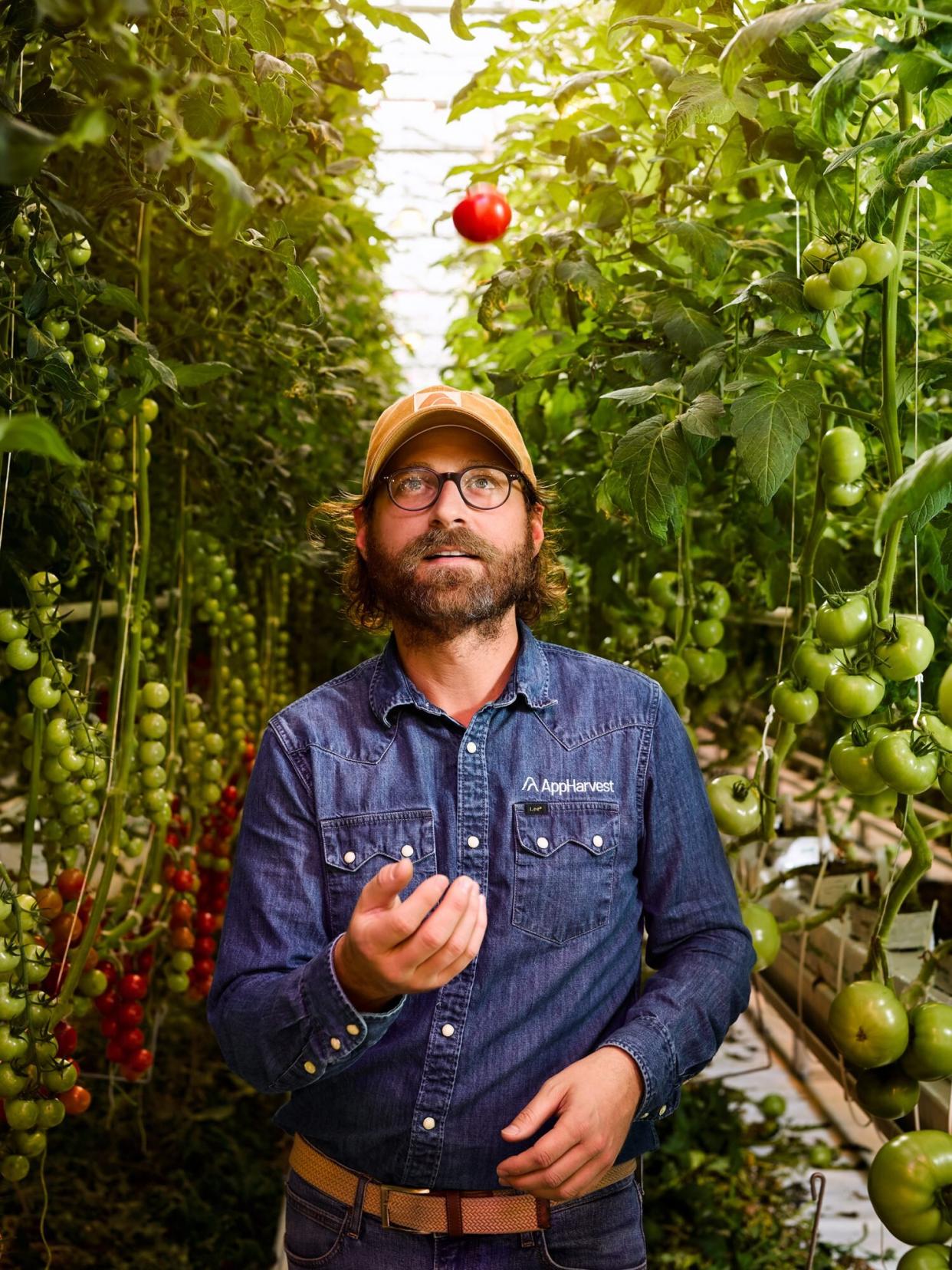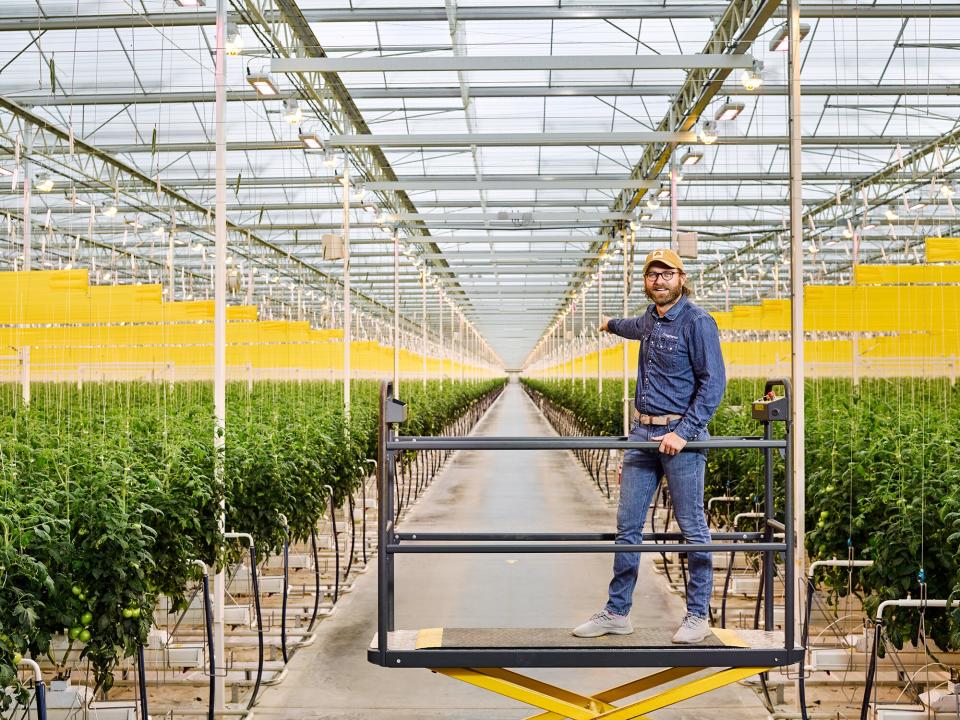How the Largest Greenhouse in the U.S. Is Using 90% Less Water to Grow Their Tomatoes

Aaron Conway
Jonathan Webb, CEO of AppHarvest, sees a world of promise in tomatoes, provided they're grown the right way. Namely: indoors.
At the company's 2.75-million-square-foot greenhouse complex in Morehead, Kentucky—which opened in November 2020—the vast growing-room floor is striped with long hydroponic tanks set waist high. From the tanks, tomato vines stretch skyward along supporting wires. Sunlight inundates the room through a gridded glass and steel ceiling, although rows of pink LED lights compensate when clouds roll in. The tomatoes are irrigated solely by rainwater, channeled into a holding pond next to the building. The air inside is hot and humid, whether it's August or January.
The 60-acre structure is the largest greenhouse in the United States. And Webb says that it has the potential to resolve a plethora of crises facing agriculture today—from farm labor abuses and fertilizer runoff to the impact of climate change and an over-dependence on pesticides, along with environmentally taxing inputs, like water. He hopes that it will also revitalize the local economy.
Rowan County, where AppHarvest is based, is on the edge of central Appalachia. Slumping coal production in the area has cut industry jobs almost in half over the last 15 years. The county's median household income is 40% lower than the median U.S. household income, and the poverty rate is more than twice as high.
While facilities like AppHarvest's do require energy to power heaters and lights, they can produce as much as 30 times more yield per square foot than outdoor fields. Growing tomatoes hydroponically requires 90% less water (per tomato produced) and no herbicides, and operations can even introduce predatory insects to control any pests that do slip in, according to Gene Giacomelli, Ph.D., a professor of agriculture at the University of Arizona who studies greenhouses and other advanced growing systems. This greenhouse is also a controlled environment—so no matter what the climate is doing outside, the plants always have perfect growing conditions. AppHarvest even installed a closed-loop recycled-water system to keep any nutrient runoff out of Rowan County's waterways.

Aaron Conway
Webb makes no claims to be a farmer. But the entrepreneur did see opportunity in the fact that Morehead is within a day's drive of 70% of the American population—a core asset for distributing fresh produce.
And that starts with tomatoes. Fresh slicing tomatoes are an ideal crop to grow, says Giacomelli, because produce is sold by weight, and tomatoes' water content makes them more profitable than, say, hollow bell peppers. The U.S. currently imports $2.1 billion worth of fresh tomatoes from Mexico annually, more than the total produced by California and Florida combined.
AppHarvest can deliver fresher, more flavorful varieties than Mexican farms, grown more sustainably, at the same price point. If the cool, rainy Netherlands can become the world's second-largest exporter of produce and other plants by covering wide swaths of farmland with greenhouses, Webb says, why not Kentucky?
What makes AppHarvest's vision uniquely compelling is its commitment to transforming farm labor into a steady 9-to-5 job that doesn't require hours of stooped labor every day, exposure to dangerous chemicals, or migrations from region to region to follow the seasonal crops. (It's a stark contrast to Florida's tomato industry, which has been plagued by labor-abuse claims and reduced production since the banning of the much-relied-on pesticide methyl bromide due to environmental concerns.) AppHarvest has already hired 130 staff, offering base pay well above minimum wage, along with health care coverage, a 401(k) match and other benefits. And it's funding programs in local high schools to train future generations of indoor farmers.
In the fall, AppHarvest announced that Novus Capital was helping it go public, with the goal of raising $475 million on top of the $150 million it has already accrued. The company has broken ground on a similar--size tomato greenhouse outside of Richmond, Kentucky, as well as a 15-acre facility in Berea for fresh greens. And at press time, the first crop of tomatoes from the Morehead location was being harvested. Webb says he firmly believes that Kentuckians will embrace a rapid shift to greenhouse agriculture: "Farming will use more infrastructure and technology. This is what the future is going to look like."

